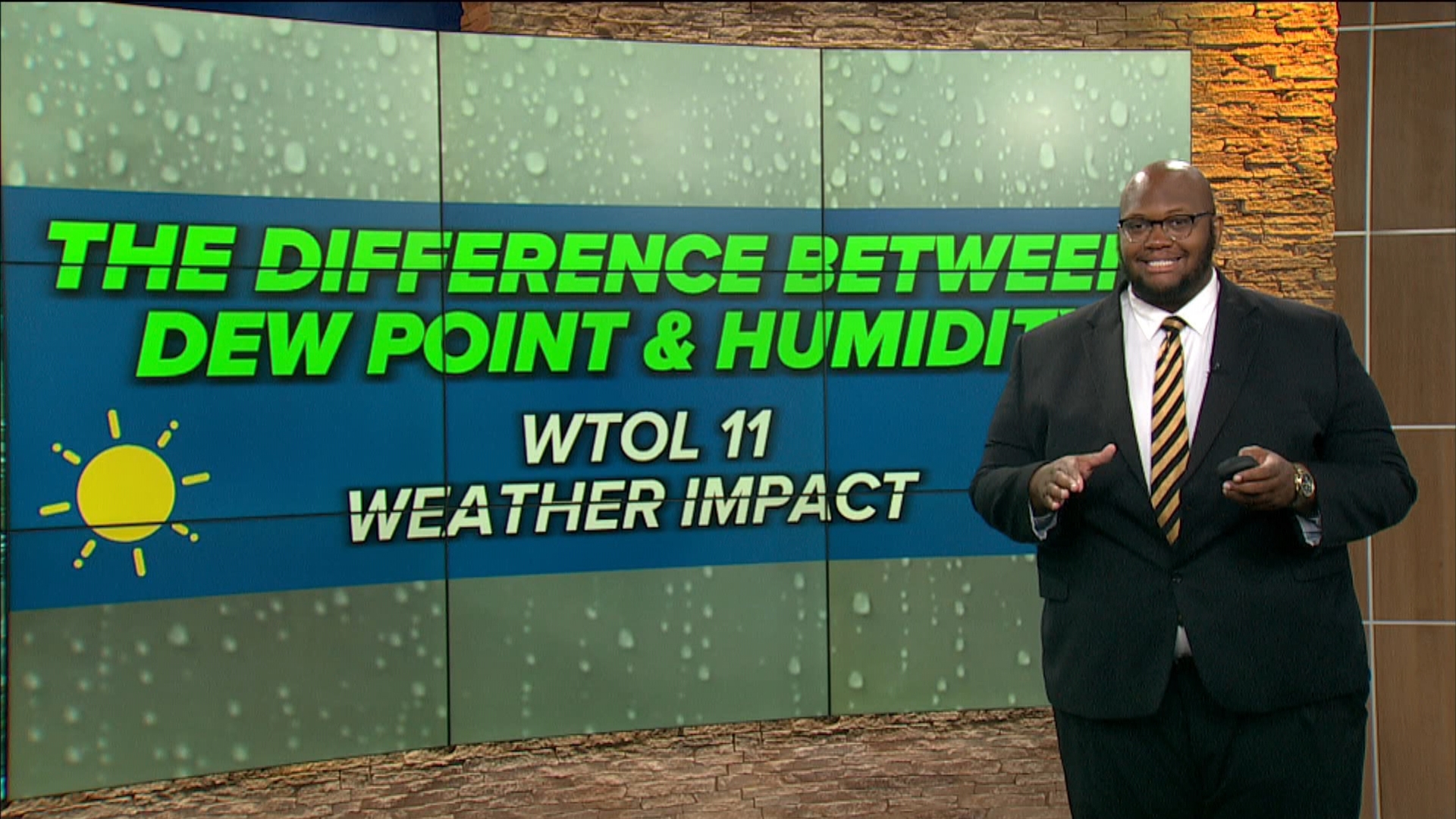TOLEDO, Ohio — As warm summer days continue throughout northwest Ohio and southeast Michigan, so does the chance of hot days becoming more common over the years.
Let us set the stage: you are watching the weather on the TV, and one of the meteorologists says that it will be a hot and muggy day.
You decide to look at your WTOL 11 Weather app and it says the temperature is 90 degrees, the dew point is 68 degrees and the humidity is near 70%.
All this data can be confusing, especially when the air temperature is not remotely close to the dew point. The further the air temperature is away from the dewpoint, the drier the air will feel when you step outside. If you add rain showers to the equation, that would mean the humidity will shoot up and then the dew point and the temperatures become closer, making it more of a sticky-feeling day outside.
Air temperature, dew point and humidity can be a complicated process, but we are here to break down and answer the most frequent questions asked during the summer months.
So, what is the difference between dew point and humidity?

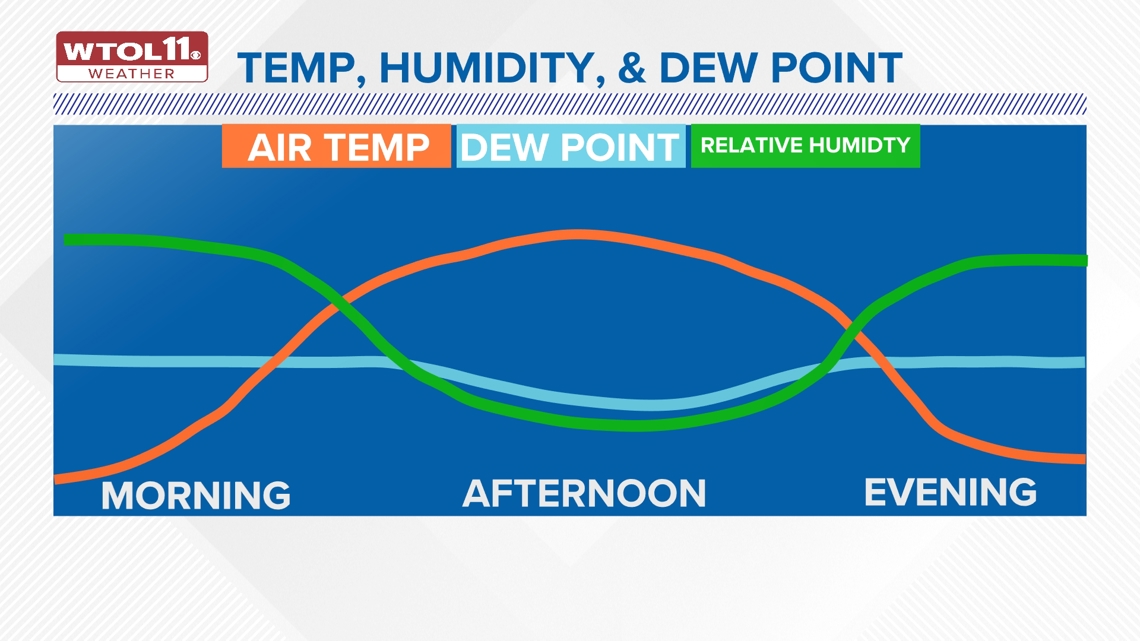
This process begins with certain ingredients that make up the temperature for the day.
Once you have the high and low temperatures for the day, you can tell if it is hot, mild, or cold.
After that, there is a second component of how it may feel outside. This is where comfortable conditions versus muggy conditions take place.
According to the National Weather Service, the dew point is the temperature where the air needs to be cooled to, at constant pressure, in order to achieve a relative humidity (RH) of 100%. At this point, the air cannot hold more water in the gas form. If the air were to be cooled even more, water vapor would have to come out of the atmosphere in the liquid form, usually as fog or precipitation.
The higher the dew point rises, the greater the amount of moisture in the air. This directly affects how "comfortable" it will feel outside.
Many times, relative humidity can be misleading. For example, a temperature of 30 degrees and a dew point of 30 will give you a relative humidity of 100%, but a temperature of 80 and a dew point of 60 produces a relative humidity of 50%.

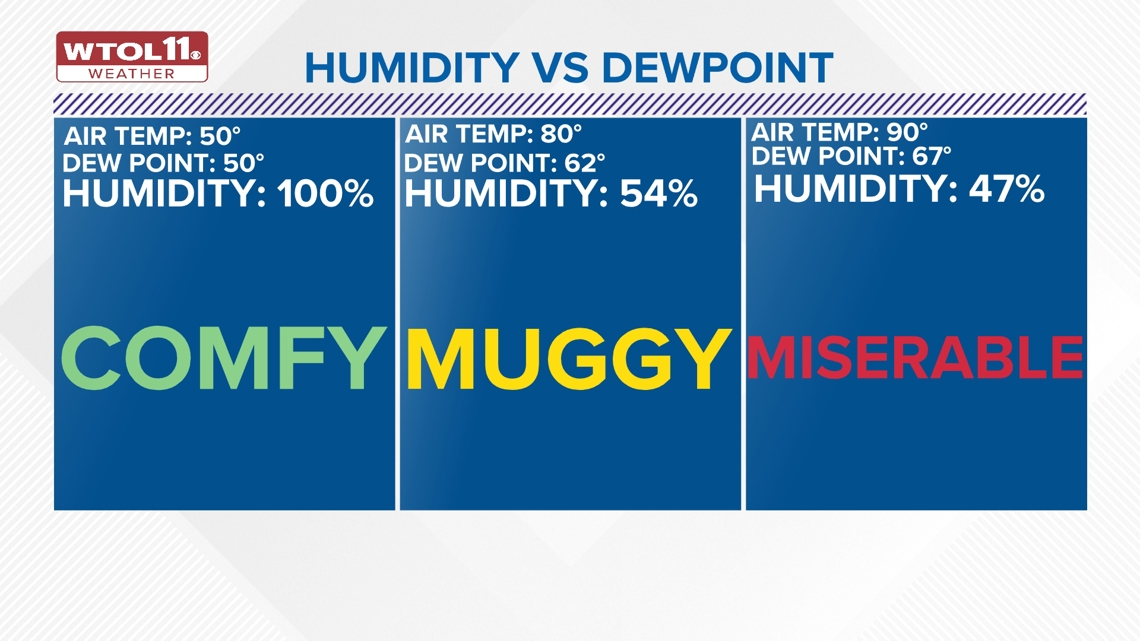
Relative humidity and dew point
Our bodies can feel when it is humid outside. But, when we look at the humidity and it says 80%, sometimes it does not tell exactly if it is humid outside or not, because the temperatures play a huge factor.
Since the cold air is so dry it is exceedingly rare that you will get humid conditions on a day where the temperature is anything below 60 degrees.
The descriptive way to explain what exactly relative humidity is the ratio of water vapor that is condensed in the air, the amount it can hold and the result of it shows up as a percentage.
Although we still use relative humidity as a reading to tell how humid it is outside, the best and most efficient way to truly tell how comfortable or humid it is outside can simply be found by using a dew point scale range.
To begin, it is safe to say that any dew point under or at 60 degrees can be identified as comfortable outside.
The second range we follow is when a little bit of humidity is felt, anywhere from 60 to 65 degrees.
By the time the dewpoint reaches 66 to 70 degrees, is when you start to feel the thickness and mugginess in the air.
Now as we get towards the range of 71 to 75 degrees during hot muggy days, it can sometimes feel extremely uncomfortable and sweating becomes quite common, which leads to heat exhaustion, when your body is not able to cool down.
Although we rarely see dew point above 75 degrees in our area, at this level, being outside becomes extremely dangerous over a period. With this range the atmosphere is so soupy, typically on a balmy day with dew points above 75 degrees, it is not safe at all to be out for extended periods where sweat fails to evaporate from our skin, keeping us warmer and leaving you feeling sticky.

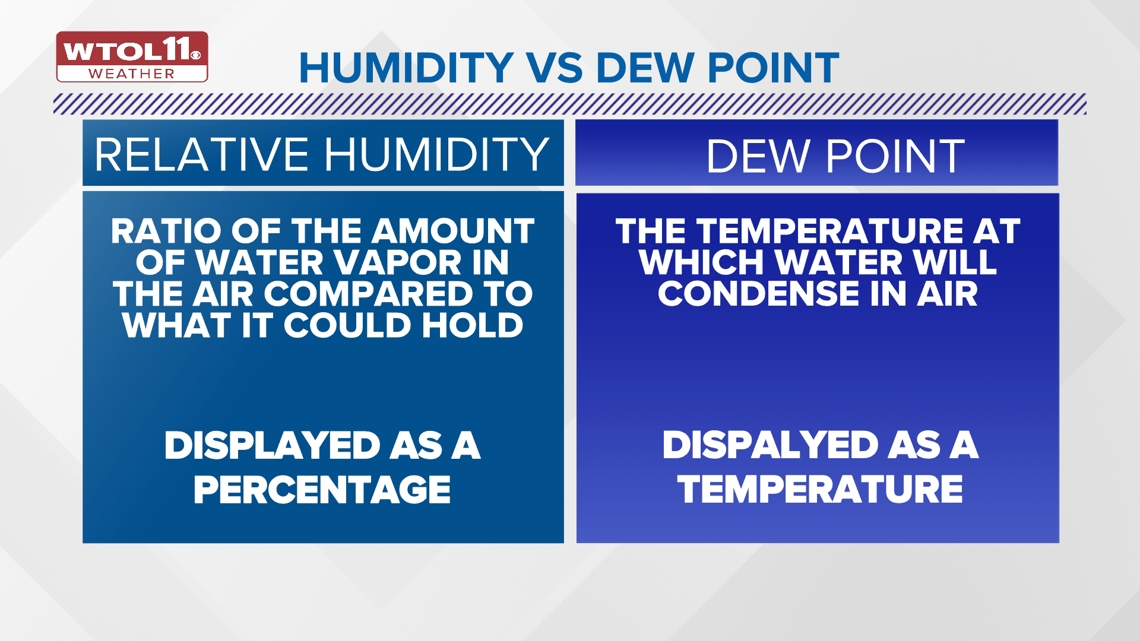
Dew point and humidity impacts
When: If our climate continues to warm every year, hot and muggy days will become not only more familiar to our area but will likely stick around longer into the early spring days and late summer days, heading into to fall. Warmer and muggier days could likely lead to health impacts during the summer months. Most times, hot and comfortable days can be tolerated, but when we add the humidity to the equation, it causes concerns with heat stroke, and heat exhaustion because our bodies take significantly longer to cool down than on a hot low humidity day, versus a hot high humidity day. Days that are extremely humid are becoming more common and more extreme. Most of the highest dewpoints on record have occurred since 1990. This is concerning because the body’s ability to evaporate sweat is limited on extremely humid days, making it harder to cool off.
Impact: With more humidity and moisture in the atmosphere, this is nothing but fuel for severe weather and storms to thrive during the spring and summer months. The warmer and more muggy days we have, the more opportunity for the atmosphere to be unstable causing storms to develop right here in our area. On a bigger scale, one weather phenomenon thrives off humidity and moisture, and that is hurricanes. Studies show we have already seen a significant uptick in the tropics over the years, and Hurricane Beryl proved exactly that. This hurricane strengthened into a Category 5 hurricane earlier than any other storm. Although it weakened by the time it got to the Texas Gulf Coast, its strength and abundant moisture were able to make their way to our area, bringing us heavy rainfall and extremely humid conditions. The amount of moisture available was enough to impact our area this past week. As our climate warms, remnants of tropical systems will become more common.
Need: Humid and muggy days will become more common. As we continue through the summer months, it is key to understand the difference in knowing what dew point and humidity are and how they coincide. Understanding how to tell the difference between dew point and humidity will help us prepare better and help keep you and your loved ones safe during the hot and humid days. Remember, as warmer days become more consistent during the peak heating months like June, July and August, it is key to always stay vigilant, and stay hydrated when warm and humid conditions can sneak up on you during these summer months.

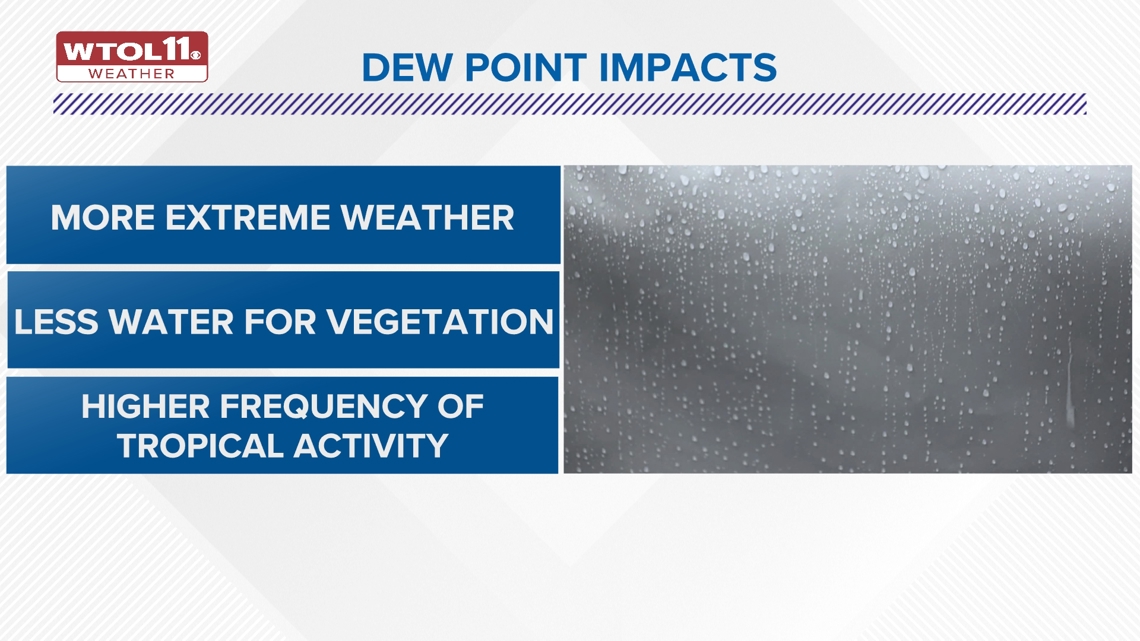
Stay up to date each & every week with WTOL 11 Weather Impact Explainers & Breakdowns.
MORE FROM WTOL 11 WEATHER IMPACT:

